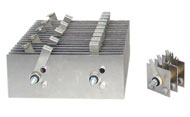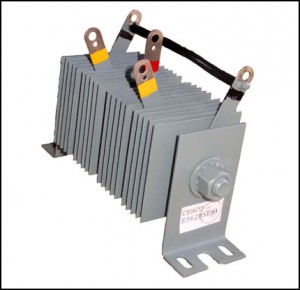
are needed, it's a straighforward calculation. On the other hand, note that with Metric units, no conversion constants etc. Last, sorry to use those pesky Metric units, convert to Fahrenheit as needed. Aluminium oxide (which is the surface of an aluminium heatsink) is probably one of the worst conductors in the world.) Don't forget to use thermally conducting paste between diode and heatsink.Īlso, do not connect cables to the heatsink, connect directly to the stud on the "rear side" (not between heatsink and diode). Also that each diode needs its own heatsink. This means you need to mount the heatsink using some kind of isolation as it will carry voltage. IMPORTANT: on stud diodes, the stud is one of the terminals. Check the heatsink manufacturers to see how big such a thing (and it's quite big, I tell you). In your case: 60 / 100 = 0.6 K/W, the heatsink needs to have a thermal resistance of 0.6 K/W.

Or even better: Temperature rise / Dissipated power = Thermal resistance. (K = DegC, but at a different zero-point), this tells you how much temperature rise will be at the diode per watt dissipated.ĭissipated power x Thermal resistance = temperature rise at diodes. Now, all commercially available heatsinks have a key parameter in the specifications called "Thermal resistance", usually specified in K/W Now you know how much temperature difference the heatsink needs to deal with: 100 DegC - 40 DegC = 60 DegC. If so, it needs to be well ventilated.Īssume a maximum temperature inside of 40 DegC (I'm guessing here, don't know what the charger looks like, substitute your own value as needed). Third, what is your maximum ambient temperature? I don't know the weather situation in Minnesota, but more interesting is, whether these are inside an enclosure. (should give a chip temperature of no higher than 150 DegC).

Here, also best with a datasheet, but assume 100 DegC case temperature is max. Second, you need to estimate the maximum temperature that the diodes will tolerate. Your power loss is then 100 A x 1 V = 100 W per diode (quite a lot, actually). But as a first estimation, try 1 V per diode. Just don't use steel, it's a lousy thermal conductor.įirst, you neeed to get an idea of the power loss in the diodes, best if you can get a datasheet.

If the diodes are reverse, then ground (case) becomes negative and the center tap becomes positive. In that configuration, the case (ground) becomes the positive terminal, and megative is taken from the center tap of the transformer. It would be nice if your circuit allows the diodes to be mounted to the heatsink without insulators, and the heatsink directly to the case without insulators. Don't rely on the aluminum to make the elecrical commections. The diodes hold the pieces together, then you mount the assembly however it suits, insulating from ground if needed. I'd use heat sink grease between these pieces, and on the diodes. When sandwiched together, there will be space between the fins, and you'll have an area about 2 inches by four inches in which to mount the two diodes. Bend up two fins on each piece about an inch high. To make this, take one piece of sheet 4 inches square, one 4 by 5, and one 4 by 6 inches. This should be lots if forced air cooled. You can make this assembly about four inches square by about an inch high and get about 80 sq inches of radiating surface. You'll need to know if you can mount both diodes on the same heatsink without insulators, and whether you have to insulate the heatsink from ground (the case). You could make up a heatsink using three pieces of 16 ga aluminum (steel is a poor choice here), and sandwich them together into a finned heatsink to mount both diodes on. The cooler they run the better, so the more heat dissipating area you can put into the air stream the better. Over rated or not, if you melt the silicon, they become useless. Those silicon diodes are over rated, but heat is heat, and they will get hot.


 0 kommentar(er)
0 kommentar(er)
